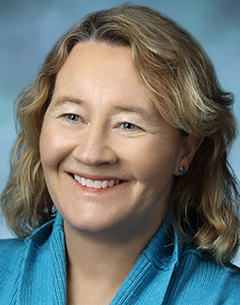
Carol Greider
Daniel Nathans Professor and Director of Molecular Biology and Genetics, Johns Hopkins University
Charles M. and Martha Hitchcock Lectures
March 5, 2014 — 4:10 PMInternational House, Chevron Auditorium — 2299 Piedmont Avenue, UC Berkeley Campus
About the Lecture Telomeres were first recognized in the late 1930s as important structures on chromosome ends. In the 1970s the sequence of these structures was identified in the ciliated protozoa Tetrahymena by Elizabeth Blackburn. In the 1980s telomerase was … Continued
International House, Chevron Auditorium - 2299 Piedmont Avenue, UC Berkeley Campus Berkeley Graduate Lectures [email protected] false MM/DD/YYYYAbout the Lecture
Telomeres were first recognized in the late 1930s as important structures on chromosome ends. In the 1970s the sequence of these structures was identified in the ciliated protozoa Tetrahymena by Elizabeth Blackburn. In the 1980s telomerase was discovered as an enzyme that elongates telomeres and compensates for natural telomere shortening. We will discuss the journey from these curiosity driven discoveries to the appreciation of the role of telomeres in human disease.
About Carol Greider
Carol Greider is internationally renowned for her important contributions to the field of molecular biology. She was awarded the 2009 Nobel Prize for Physiology of Medicine along with Elizabeth Blackburn and Jack W. Szostak for their discovery that genetic sequences known as telomeres are protected from progressive shortening by the enzyme telomerase. Greider discovered telomerase in 1984 while working with Elizabeth Blackburn at the University of California, Berkeley. Telomeres are essential to chromosome maintenance and stability. In the absence of telomerase, telomeres shorten progressively as cells divide, eventually leading to cell death or cellular senescence. Greider’s breakthrough discovery of the telomerase enzyme thus allowed a mechanistic understanding of cellular reproduction, opening new avenues of research into cancer, and age-related disease.